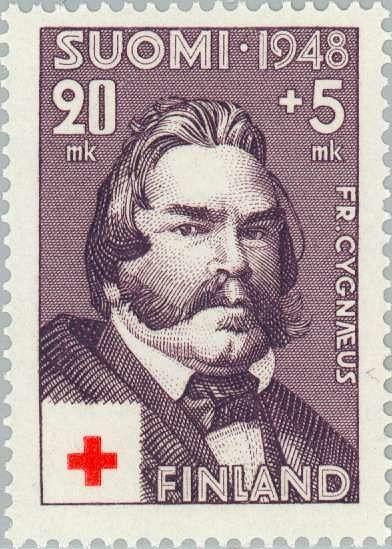Fredrik Cygnaeus
Born April 1, 1807, Hämeenlinna. Died February 7, 1881, Helsinki.
Master of Arts, Imperial Alexander University, 1832
Vice-rector, Imperial Alexander University, 1865-66
Dean, Division for History and Philology, Imperial Alexander University, 1856-67
Professor of Aesthetics and Modern Finnish Literature, Imperial Alexander University, 1854-67
Docent, History, 1839-54, acting Professor, Imperial Alexander University, 1848-53
Rector, Helsingin yläalkeiskoulu (Helsinki secondary school), 1839-52
Teacher, political and civic studies, Hamina military cadet school, 1833-37
President, Finnish Art Society, 1863-78
'Curator', Ostrobothnian student ‘nation’, 1838-49
Honours
Counsellor of State, 1867
Knight, Order of the Polar Star, 1867
Order of Merit (for service to the state), 1865
Honorary Doctor of Philosophy, Imperial Alexander University, 1860
Knight (2nd class), Order of St Stanislaus, 1856
Memorial Plaque, Hämeenlinna, 1948
Postage stamp, 1948
Photo: Helsingin yliopistomuseo / Timo Huvilinna
Written by Tomas Sjöblom
Translated by John Calton

